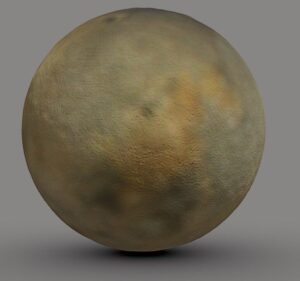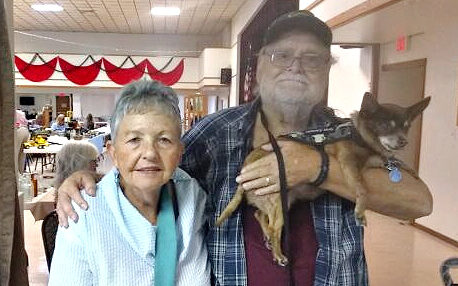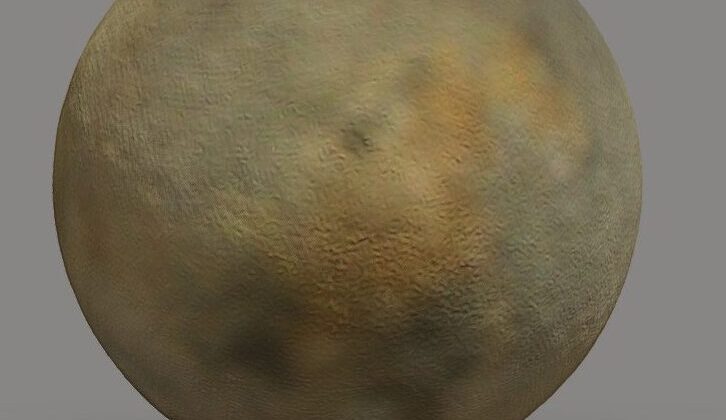
10.5281/zenodo.10358279 Objaverse 1.0 / Sketchfab[1]
We have written about non-glass marbles before in the post “Why Not Dirt and Rocks” (https://thesecretlifeofmarbles.com/why-not-dirt-and-rocks/). It’s clear from a number of our stories that we really like to add any kind of clay or stone marble to our collection. We have always been drawn to them, still enjoy finding them, and we always tell collectors who ask that they really need to add at least a few non-glass marbles to their collection.
From posts online we know that many of you also enjoy finding non-glass marbles and we know that dozens are often found in freshly plowed ground.
Lauscha & Dr.Ing. Gerhard Greiner-Bär
We have a dear friend in Lauscha, Germany, named Dr.Ing.Gerhard Greiner-Bär and he has helped us time and again with our research projects and stories. He has also taught us many things about both glass and stone marbles and he has shown us that, regardless of how much you believe you know about marbles, there is always more to learn[2].
Lauscha is a town in the district of Sonneberg, in Thuringia, Germany. While the little town has a marble-making history stretching back centuries, the principle glass products made today are gorgeous Christmas decorations. This is a year-round business in Lauscha and it goes back in history about as far as glass eyes and glass marbles. The Christmas season in the district is one of hustle and bustle and many tourist visitors.
When we saw this 3-D limestone marble online while browsing we just had to know more about it and its history. We will share what we learned about it a bit later, but first we want to provide some information which Gerhard Greiner-Bär shared with us about limestone marbles.
Petrified Shell Limestone
When we sent Dr. Greiner-Bär an email he responded that Lauscha has long been the center of marble production within a radius of 40 km. (about 25 miles). Marbles were made from glass, porcelain, clay and stone. Since no marble stone was available to mine, petrified shell limestone was used instead.
Did you know that German limestone marbles were made of petrified shell? We didn’t. Here is what Microsoft Copilot has to say about this type shelly limestone: “Petrified shell limestone is a type of limestone that contains fossilized shells of marine organisms. Over time, these shells, which were originally made of calcium carbonate, become part of the sediment and are preserved within the limestone. This type of rock forms in marine environments where shells and other organic materials accumulate and are compacted and cemented over millions of years.[3]”
Spuren aus Stein – Märbel & Mühlen
Dr. Greiner-Bär also told us about the book Spuren aus Stein – Märbel & Mühlen. This book, by Professor Dr. Siegfried Rau (1935 – 2012) was published by the Regional History center Geschichts und Köhlerverein Mengersgeruth Hämmern e.B. and we had never heard about it.
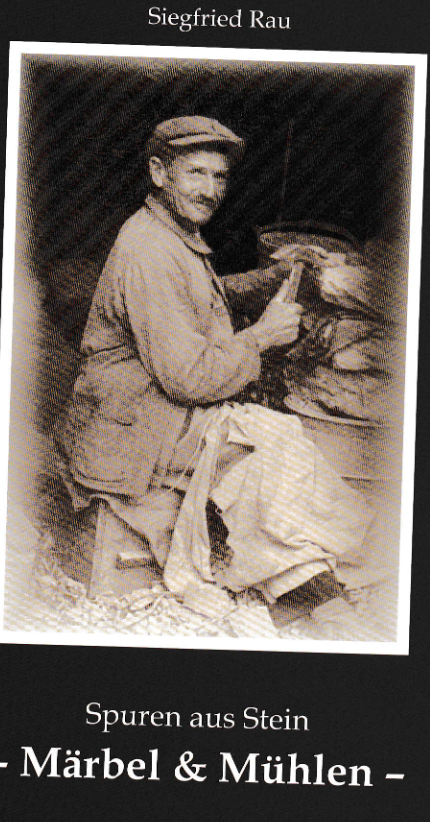
While the name of the historical society is difficult to translate literally, it is roughly translated as The History and Charcoal Burner Association of Mengersgeruth-Hämmern. This association is focused on preserving and promoting the history and traditional crafts related to charcoal production and iron processing. They have a very interesting website with lots of photographs at Geschichts- und Köhlerverein Mengersgereuth-Hämmern e.V. – Mitglied im Europäischen Köhlerverein[4]. The association is only about twenty miles from Lauscha.
The title of the book is translated in different ways, but we will use Traces from Stone – Marble & Mills. Here is a photograph of the book cover. Dr. Greiner-Bär wrote that the book is about marbles being made from glass, porcelain, clay and stone. Professor Rau won the Central Historian prize in 2020.
While we are interested in all four of these[5], we will just see what Professor Rau has to say about shelly limestone in this post. Dr. Greiner-Bär sent us excerpts from Traces from Stone – Marble & Mills about how the shelly stone marbles were historically mined and made.
We share some of these excerpts with you because they are from a source which is both hard to put your hands on and they contain information that you won’t see published elsewhere.
“1.2 Essential Conditions For Stone Marble Production Page 13”
The raw material for the stone marble production were from these formations: Cretaceous (Approximately 145.0 to 66.0 million years ago); Jurassic (Approximately 201.3 to 145.0 million years ago); and Triassic (Approximately 251.9 to 201.3 million years ago). In all of these formations the miners followed the shell limestone strata.
Did you ever think that those old German stone marbles in your collection were hundreds of millions of years old? Anywhere from 145 to 252 million years old! Well, we had never given it a thought until now.
“Sufficient shell limestone was available as a raw material for quarrying and for processing.
There were motivated workers — people who were forced by necessity, able and willing to dismantle and process it[6].
There were a number of other favorable conditions for the production of stone marbles such as the rulers of the countries, the merchants, the high demand for stone balls for various purposes…
The experience gained in the Salzburg/Berchtesgaden region[7] in the production of stone marbles was used to develop a proprietary process for the mass production of stone marble balls.
The fulfillment of these decisive conditions [led to] the production of stone beads in the 110 marble mills on the rivers Steinach, Itz and Werra with tributaries as well as on the Schwarza….”
Our Notes On This Excerpt
There are just a couple of things we want to note about this excerpt. First, note Rau’s obvious and justified pride in the German people who, though forced by necessity, were able to mine the limestone, remove it, and process it into balls of various sizes for sale and for a livelihood.
Rau explains that the final product—the limestone marbles—range in size from 22 mm (0.866”) to 42 mm (1.65”). There were a total of eleven sizes in all (page 12).
We translated some of these excerpts and we also checked Cambridge translation and then settled on DeepL.com/ . Notice that in the excerpt Rau uses the words “stone marbles,” “stone marble balls,” and even “stone beads.” We translated each of these terms. Rau uses specific and different terms in his writing. While we are not sure why he chose the words that he did, it does remind us of the early terminology used in the patent and processing of glass marbles. And, finally, just like gold miners follow quartz veins, German toy marble makers followed the shell-limestone veins.
Rau’s Marble Names & Sizes
Rau was well aware of the different names for marbles depending on location and, he notes, the size of the orb. On page 12 he writes:
“Under the most diverse names, such as Märbel, Mtumel, Marmel, Murmel, Kuller, Boller, Schusser, Schiesser, Knöllchen, Schosser, Schussertery , Pascher, … were the natural stone marbles made of limestone at the time of their production probably known all over the world. In terms of naming motivation, [Rau quotes the author Vgl. Sperschneider] who divided them into three groups according to linguistic considerations:
1.Names formed according to the material (Marmel, Murmel, Märbel, made of marble = limestone)
2. Names based on the shape of the ball (Kuller, Boller …)
3. Names of the game or toy (Schiesser, Knäulchen …).
4.The sizes of the marbles were named according to the ‘Lürienma’. (page 12)
We won’t get into measurement of marbles in lines! Simply, the most common size marbles were 8 to 16 mm or 0.314 – 0.629 inches in diameter or 5/16 fractional inch. Larger stone marbles were called Pascher.
“1.2.1. The Shell Limestone And Its Main Mining Areas Page 13”
The following shell limestone layers from the three geological formations – Cretaceous, Jurassic and Triassic – were used to extract the raw material for stone marble production.
- The boundary layers from the Buntsandstein to the Muschelkalk.” This boundary layer is critically important: The Buntsandstein is a Lower Triassic unit characterized by red sandstones and conglomerates, while the Muschelkalk is a Middle Triassic unit known for its marine limestone deposits. The transition between these two units marks a change from continental to marine environments[8].
- Layers of the Lower Muschelkalk strata
- Strata of the Middle Muschelkalk
- Layers of the upper shell limestone
- Layers of the middle Liassic [Lower Jurassic period], the so-called spotted limestones”
We learned a great deal in this section by Rau and we came to have a healthy new appreciation of the miners and the other workers who followed the different geologic strata and who differentiated the shell strata that they needed to make marbles and any other stone balls for industry. This shelly layer was dug and extracted and then the workers in the mills turned the raw materials into marbles[9].
Why Chase The Shelly Limestone?
Rau continues on page 13:
“The shell limestone occurring in these layers fulfilled the following requirements for the Marble formation:
- It could be split so that it could be worked with the simplest of tools, the hammer.
- It had the necessary shape to run through the milling process optimally.”
Here we learned one of the main reasons the miners were chasing the shell limestone so persistently: this stone, once dug, was relatively much easier to process with limited resources and simpler mines all along the rivers and streams.
Sedimentary Rock Fossiliferous Limestone; National Museum of History; EO401457; This is a limestone shatter cone with fossil. Creative Commons 0; https://creativecommons.org/publicdomain/zero/1.0/
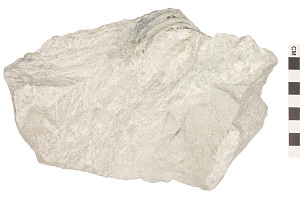 Raw Shelly Limestone
Raw Shelly Limestone
While we can’t be certain what the German raw cut limestone looked like, it may well have looked something like this.
Did The Mined & Milled Marbles Have Shells Showing on Their Surface?
After studying Rau for awhile we came to wonder exactly what the miners and mill workers produced. What did the shipped marbles look like?
We thought that we were familiar with what a German 19th century mined marble looked like. We have certainly found an uncounted number and have helped others identify them. But we had no idea until now that they were made of shelly or marine limestone.
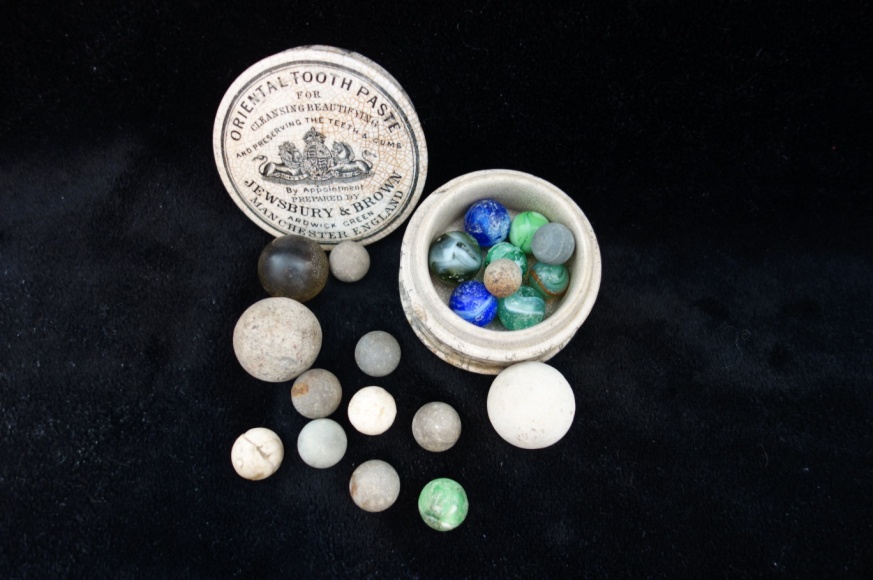
Photograph by Jo Garrett
We certainly don’t think our Eutaw limestone dug near Baltimore, which is the feature image for this story, looks “shelly”. Maybe it was mined and milled in America?
Some of the marbles in this photograph are, of course, glass, but others are stone and limestone. Again, we see nothing “shelly” looking.
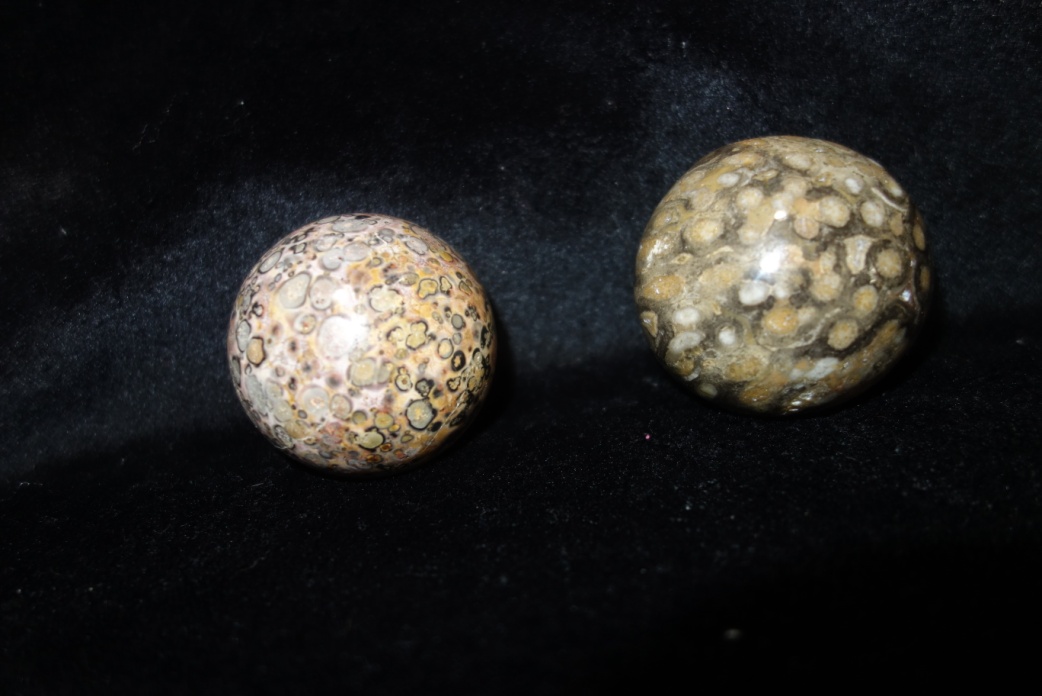
Photograph by Jo Garrett
Well, when we did not see any shells or marine life, we turned to the National Museum of Natural History to look at raw fossiliferous limestone like this slab above. We remained confused about why the Germans mined and milled limestone didn’t look like these marbles. We aren’t sure of the matrix but these sure are full of marine life!
The marble on the right in this photograph is a Moroccan Orthoceras [squid] orb. It contains fossilized “squids and corals” from Morocco. In fact the sphere is 350 – 400 million years old (Devonian Period, in geologic time). The orthoceras fossils are been dug out of the mountains of Morocco, which like the parts of Germany where the mines and mills were, were also once under the sea. In the right-hand orb in the photograph you can actually see the squid in the stone.
We were curious what AI (Microsoft Copilot) might “think” a smooth marble with marine and shell fossils might look like. Well, we have to admit it is gorgeous and we would like to add it to our collection. But no, we’re sure this is not what was being mined in Idar-Oberstein[10].
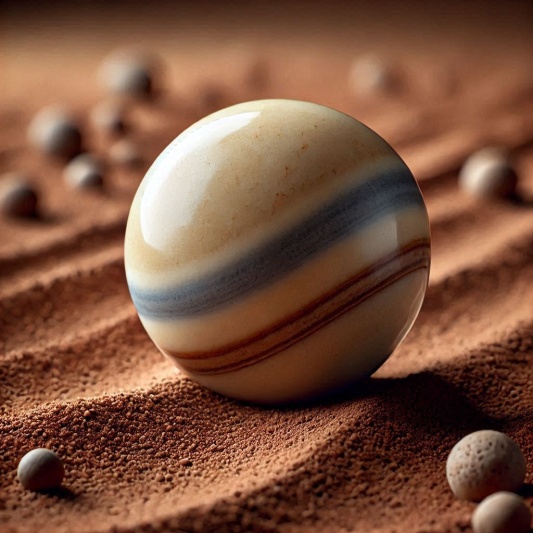
Photograph by Microsoft Copilot
Back To The Well—“Märbelmühlen”
While we felt like the most novice beginner, we decided to send our old friend, Dr.-Ing. Gerhard Greiner-Bär, a personal message to ask him why you can’t see marine life and sea shells in German limestone marbles.
Dr. Greiner-Bär wrote back that “in principle, no sea creatures can be seen in the marbles. The surface is smooth because [it is] ground together in so-called “Märbelmühlen” to create a smooth surface. Please take a look on the Internet at murmelwelt.de/Stein-Murmeln/ (12/8/2024).
We did check out this Marble World (Murmelwelt) website and we highly recommend it. The photographs are high resolution close-up and it has information about not only German stone marbles but also crockery, china, divided and ribbon core swirls, Joseph’s coat swirls, Lutz, onionskins, clouds, micas, sulfides, clambroths, and many more. There is also some history, marble games, and much more.
Finally, we asked Dr. Greiner-Bär to clarify it for us one last time and here is his response: “…You can’t see the shells or the sea life because the marbles were ground and polished in the marble mills. They were not coated with hydrated lime or any other mixture, to ‘cover’ the shelly limestone.”
We learned a great deal from Rau and highly recommend him. There is so much technical data, photographs, and information about stone marble mining and milling that we hardly scratched the surface. For example, we did not even consider the hard and skilled work of “die Märbelpicker”. It is a testament to the fortitude, hard work, innovation, and skill of the people who produced the marbles and created a marble industry which, we are told, led to further innovation in the toy business.
Coming to America: The Herring Run Archaeology Project
But we want to turn now and tell you about an ongoing archaeology dig in the northeast of Baltimore, Baltimore County, Maryland. This is a remarkable site which has provided every opportunity for the public to become involved and which continues to provide educational options both on and off site. And yes, they dug up limestone, clay, & glass marbles here!
This significant archaeological site has been underway since 2014 by the Herring Run Archaeology Project (https://herringrunarchaeology.org/). The Project is supported by Baltimore Heritage and the Northeast Baltimore History Roundtable.
Lisa A. Kraus
Dr. Lisa A. Kraus is an Archeologist in Anthropology/Historical Archaeology from the University of Texas at Austin and she has worked as an archeologist for the Maryland Environmental Service/Maryland State Highway Administration since 2009. She is Co-founder and Project Director (with Jason Shellenhamer ) of the Herring Run Archaeology Project. She has a particular interest in public archaeology, archaeology of the African Diaspora, and archaeology of the Chesapeake region[11].
Jason P. Shellenhamer
Jason is Co-founder and Project Director of the Herring Run Archaeology Project. He completed his Master’s of Applied Anthropology at the University of Maryland in 2004. He is currently the Senior Project Archaeologist at the Baltimore Headquarters of Rummel, Klepper & Kahl, LLP. His projects have included excavations at the Chesapeake & Ohio Canal Historic Park, Antietam National Battlefield. … . He also serves as the co-curator of archaeology at the Natural History Society of Maryland.[12]
The project got underway in 2014 “…with an archaeological survey … in Herring Run Park to identify sites related to the Hall Springs Hotel and Ivy Hill Plantation.[13]” The Project is lead by husband and wife archaeologists Lisa Kraus and Jason Shellenhamer. Among other artifacts the Project has uncovered are First American projectile points (PPK), awls, and pottery shards.
The Native American Artifacts & Other Herring Run Park Dig Sites
The archaeologists and volunteers dug a First American campsite with artifacts dating back 5,000 – 9,000 years ago. The National Park Service tells us that “the time period of 5,000 to 9,000 years ago corresponds to the late Archaic period in Native American history. This era is characterized by significant developments in tool-making, subsistence strategies, and social organization among indigenous peoples in North America.[14]”
The Hall Springs Hotel was a second archaeological site which was explored in the Park. The Hotel was built about 1815 as the Herring Run Tavern. It was later renamed the Hall Springs Hotel. The hotel was built by the Hall family and became a popular rural retreat for Baltimore residents.
In fact, in the 1860s, visitors could reach the hotel via horse-drawn omnibuses and later, electric trolleys. The hotel was known for its comfortable accommodations, good food, fishing, and picnicking spots along the Herring Run[15].
Regrettably the old hotel was torn down due to the high costs of renovation and upkeep.
The Ivy Hill Plantation Site was originally part of the larger “Broad’s Choice” parcel, which was conveyed to John Broad in 1695. Over time, the land was divided and sold, eventually becoming known as Ivy Hill Plantation.
In the early 19th century, the property was owned by the Hall family, who built a stately manor house on the site and named it Ivy Hill. By 1900, the property was sold to William Hall Harris, a lawyer in Baltimore City[16].
Eutaw Farm
Eutaw Farm, like Ivy Hill, has deep roots dating back to 1695 when both were part of the same Broad’s Choice land parcel. The Farm or Estate was never a plantation.
However, enslaved people did live and work on the 19th century Eutaw Farm. Archaeological efforts by the Project since their work started on the Farm in 2015: We “…have uncovered significant information about these [enslaved] individuals. …We’ve made major breakthroughs in our research into the enslaved families who lived at Eutaw, allowing us to make tangible connections between the artifacts we recovered and the individuals who left them behind over 150 years ago[17].
Limestone Marble
Here is the notation published with this photograph:
“A plain limestone marble recovered during the 2018 archaeological excavation of the house at Eutaw Farm. Marbles such as this are one of the few representation of the lives of children living at the house at Eutaw Farm during the eighteenth and early nineteenth century. It is not possible to specifically attribute this toy to any one specific person and it may have been an object belonging to one of the Hall family children or a possession of one of the several children of the Distance family who were enslaved on the farm.”
10.5281/zenodo.10358279 Objaverse 1.0 / Sketchfab[18]
In light of the Rau book what do you think about this gorgeous limestone marble? It is certainly mined and milled. Was it handmade? Where do you think it may have originated?
Carroll County, Maryland
Carroll County is located to the northwest of Baltimore City and is part of the Baltimore Metropolitan Area. This area has mined limestone for centuries. Quarries include Tahoma Farm Road which was worked much of the 19th century, William Carbaugh’s Quarry, and S.W. Barrick & Sons which opened in 1874 and which has been in continuous operation since.
And yes, just like in Idar-Oberstein Germany, Maryland does have shelly limestone. “The limestone in this region is often referred to as shelly limestone, which is rich in fossilized remains of marine organisms such as brachiopods, bryozoans, crinoids, sponges, corals, and mollusks. These fossils are remnants of ancient marine life that once thrived in the shallow seas that covered the area millions of years ago.”[19]
But we have no information on any toy stone marble mills anywhere in Maryland. The only thing that we can pin down is that stone marbles were probably imported from Germany or they were handmade on a very localized basis. So, the origins of this outstanding example remain a mystery to us. If you have any information on stone marble production in Maryland to share we would love to hear from you!
Toys Found In The Eutaw Farm Dig
The focus of the specialists and volunteers who work on the Eutaw Farm dig is much broader than the enslaved families,[20] and they have uncovered some remarkable toy artifacts which doubtless belonged to the Hall children as well as the enslaved children who lived on the Hall’s farm.
“Finding toys can provide unique insights into the daily lives and leisure activities of the children who lived there, including those of the enslaved families. Here are a few types of toy artifacts that have been discovered:
- Marbles: Small, round marbles have often been found at archaeological sites, including Eutaw Farm. These were popular toys for children in the 19th century, made from clay, stone, or glass.
- Doll Fragments: Parts of dolls, such as heads, limbs, or torsos, have been discovered. These were typically made from materials like porcelain, cloth, or wood and were cherished possessions for many children.
- Toy Dishes and Utensils: Miniature ceramic dishes and utensils were common play items, allowing children to mimic adult activities like cooking and dining.
- Game Pieces: Various small objects that might have been used as game pieces, such as buttons or small carved items, have been found, indicating that children played games similar to board games or other tabletop activities.
These toy artifacts not only show how children spent their leisure time but also reflect the cultural and social dynamics of the period. They provide a poignant reminder of the humanity and everyday lives of those who lived at Eutaw Farm.[21]”
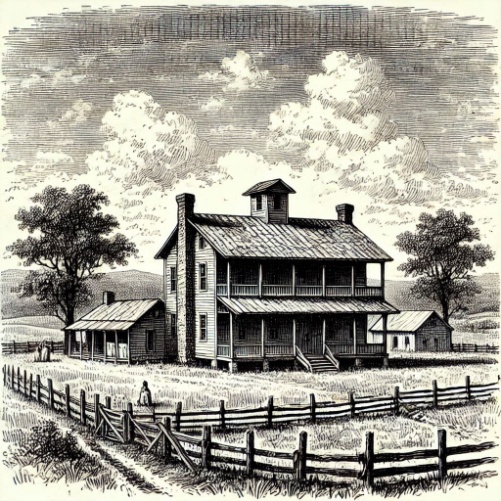
Closing Doors
It’s time to close this one down. This sketch is not of Eutaw Farm, but it is an AI sketch of what such a farm might have looked like in the 1800s.
We do hope that if you live near or in Baltimore that you give Herring Run Park a visit. And if you possibly can we strongly urge you to take advantage of the public archaeological program any time you can. We guarantee that you will work hard but also have a fantastic time learning about the past by digging, sifting, cleaning, or accessioning the artifacts which may not have been touched in about one hundred and fifty years!
And, finally, please do take another look at those old stone marbles. When you do: remember Rau and how hard it was to mine, mill, package, and ship loads off them. And next time you dig one from a dump site or pick one up off plowed ground think twice about it. It doesn’t only have a history; it is history. Each and every marble has a past and memories, and historical toys, even bits and parts, transcend time and place.
- Limestone Marble – Download Free 3D model by The Herring Run Archaeology Project (@HRAP) [fc71c07]; https://sketchfab.com/3d-models/limestone-marble-fc71c070fc884349a8a67e1d4f614a44/ ↑
- Please check our stories “The Lauschaer Glashütte and the Origin of Modern Glass Marbles” & Lauscha & Ilmenau Marbles” @ https://thesecretlifeofmarbles.com/category/marble-stories/page/7/ & https://thesecretlifeofmarbles.com/lauscha-and-ilmenau-marbles/ ↑
- Email “Steinmurmeln” from Dr. Greiner-Bär November 12, 2024. If you want to see a fun website about this type limestone then check “Ology Card 245” @ The American Museum of Natural History https://www.amnh.org/explore/ology/ology-cards/245-limestone 11/28/2024↑
- You might also want to check The association – Geschichts- und Köhlerverein Mengersgereuth-Hämmern e.V. 11/29/2024 ↑
- We generally use and highly recommend the source book Collecting Antique Marbles, 4th Ed by Paul Baumann. Iola, WI: Krause Publications, 2004, to learn about the day to day life, working conditions, and stone work techniques of the German stone miners. ↑
- Check Baumann for a view of the daily lives of these miners. ↑
- Salzburg is a beautiful city in Austria, known for being the birthplace of Mozart and its stunning Baroque architecture. Berchtesgaden is a charming town in Bavaria, Germany, located about 24 kilometers south of Salzburg. It’s nestled at the foothills of the Alps and offers breathtaking natural scenery, historical sites, and outdoor activities. Microsoft CoPilot & Salzburg, Austria (12/7/2024) & https://wanderineurope.com/berchtesgaden-day-trip-from-salzburg-must-things-to-do/?form=MG0AV3 12/7/2021. ↑
- en.wikipedia.org 12/7/2024 ↑
- There is an intriguing note in Rau on page 12. As far as we can tell, he never follows up on it in the excerpts that we have. Here it is: “The period of stone marble production leads to the production of games on a larger scale and with new raw materials, or overlaps these trades.” Wow. We always believed that it was German glass marbles rather than stone which stimulated toy production. ↑
- Idar-Oberstein is the gemstone center of Germany. https://en.wikipedia.org/wiki/Idar-Oberstein (12/8/2024). See Baumann pps. 18 – 20.↑
- See L. Kraus & J. Shellhamer, “Enslaved Families of Eutaw Farm in Baltimore,” Presentation Chesapeake Bay Program, October 19, 2020 (https://www.chesapeakebay.net/action/attend/enslaved-families-of-eutaw-farm-in-baltimore 12/9/2024) and L. Kraus & J. Shellhamer “The Man Who Stole the Past: The Yinger Assault on the Hughes Site.” Presentation Natural History Society of Maryland, February 21, 2019 (The Man Who Stole the Past: The Yinger Assault on the Hughes Site – Natural History Society of Maryland/ 12/9/2024. ↑
- “Enslaved Families of Eutaw Farm”. See also COMMUNITY SPOTLIGHT: THE HERRING RUN ARCHAEOLOGY PROJECT, BALTIMORE – Archaeology in the Community 12/8/2024 ↑
- Herring Run Park Archaeology – Baltimore Heritage 12/9/2024↑
- “Timeline of Native American Cultures.” Cuyahoga Valley National Park. @ Timeline of Native American Cultures (U.S. National Park Service) 12/10/2012 ↑
- Broad’s Choice, Eutaw Farm, and Hall Springs: An Early History of Herring Run Park – Baltimore Heritage (12/10/2024) & Hotel – FRIENDS OF HERRING RUN PARKS 12/10/2024 ↑
- Herring Run Park Archaeology – Baltimore Heritage 12/10/2024 ↑
- Lisa Kraus and Jason Shellenhamer. “Enslaved Families of Eutaw Farm in Baltimore: NHSM [Natural History Society of Maryland] Mtg. October.” October 19, 2020. @ Enslaved Families of Eutaw Farm in Baltimore: NHSM Archaeology Club Open Mtg. October – Natural History Society of Maryland 12/10/2024. ↑
- Limestone Marble – Download Free 3D model by The Herring Run Archaeology Project (@HRAP) [fc71c07]; https://sketchfab.com/3d-models/limestone-marble-fc71c070fc884349a8a67e1d4f614a44/ ↑
- Shelly limestone – Wikipedia 12/11/2024 ↑
- Eutaw Farm and the Creation of Northeast Baltimore – Johns Hopkins University Museums (12/8/2024) & Broad’s Choice, Eutaw Farm, and Hall Springs: An Early History of Herring Run Park – Baltimore Heritage 12/8/2024 ↑
- AIA Baltimore / Baltimore Architecture Foundation — Programs & Events & Broad’s Choice, Eutaw Farm, and Hall Springs: An Early History of Herring Run Park – Baltimore Heritage ↑

